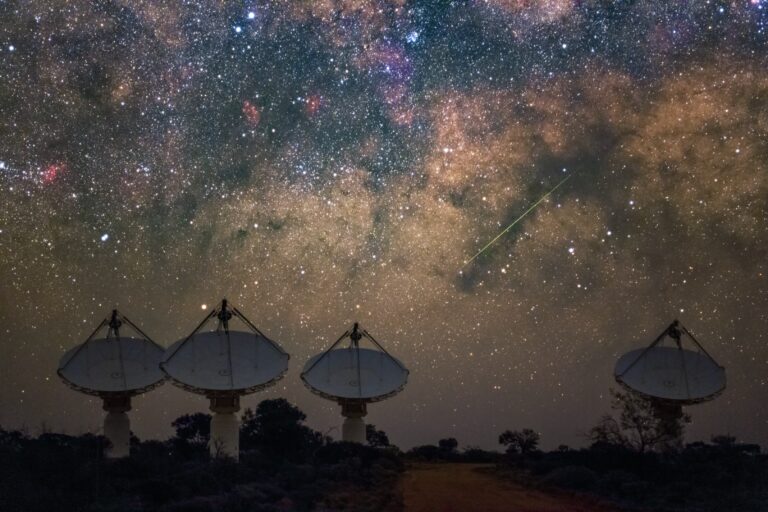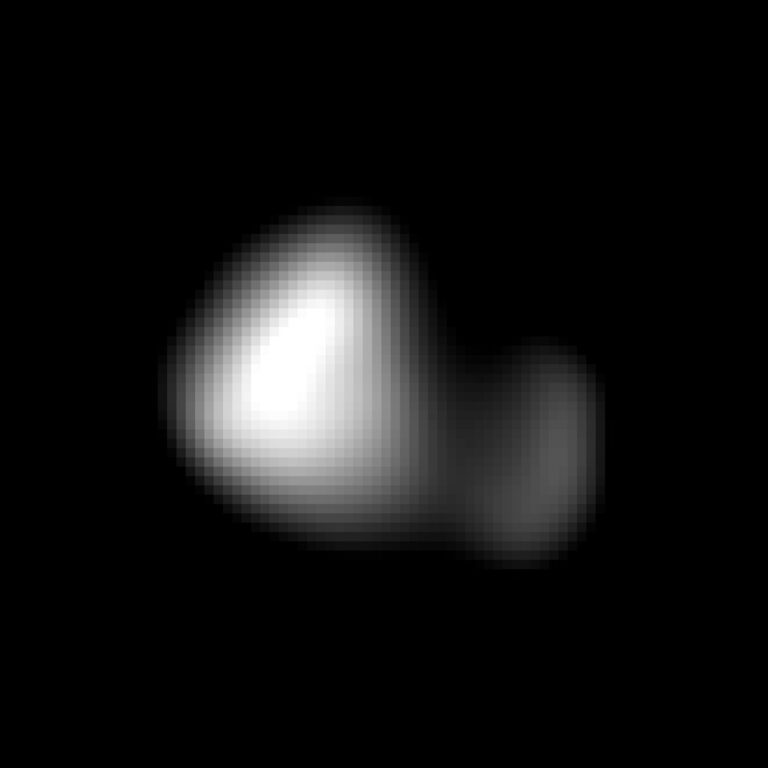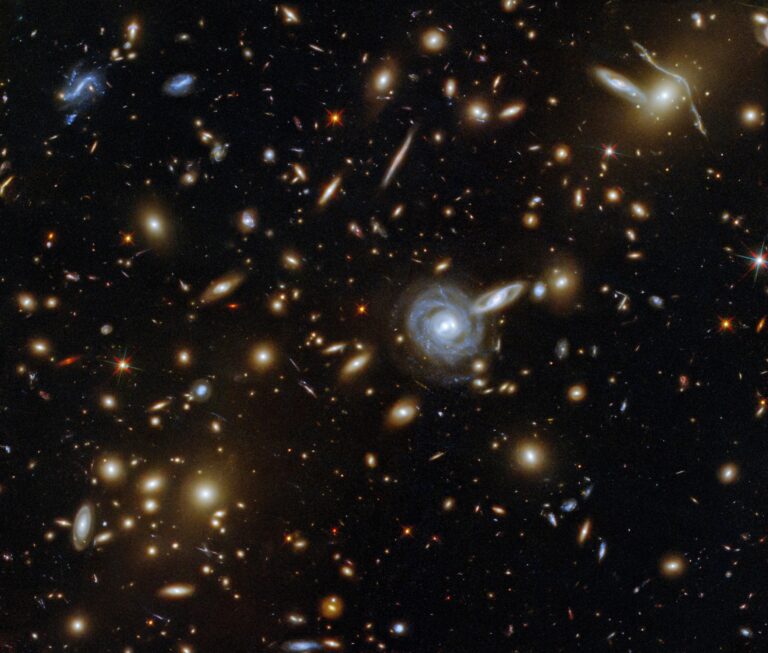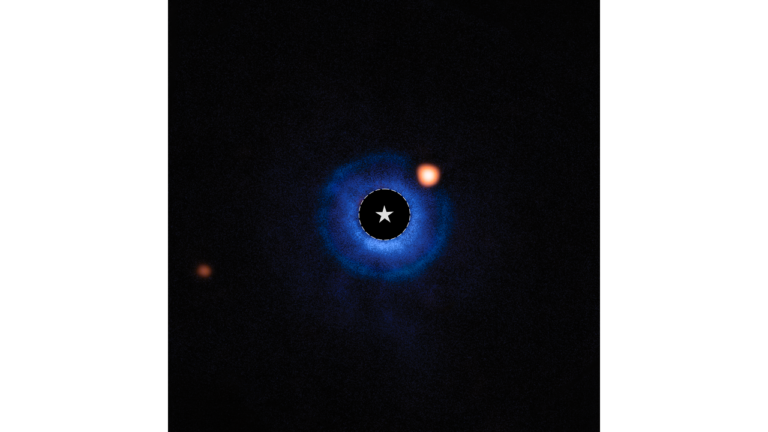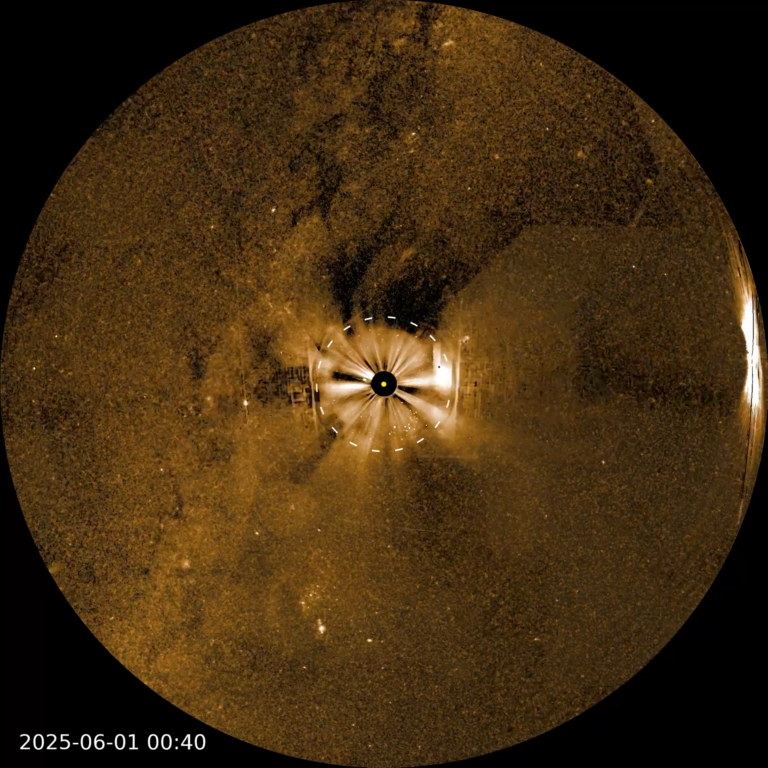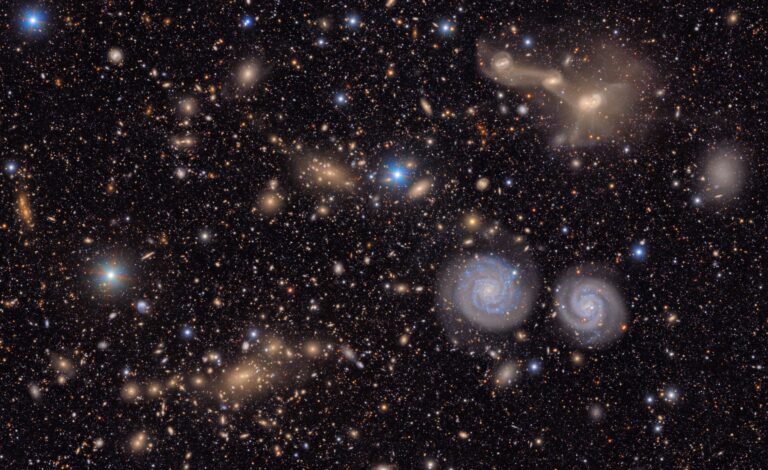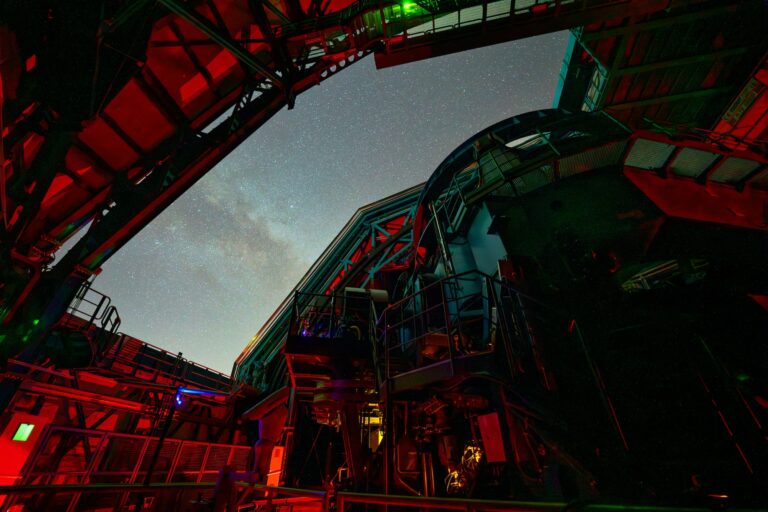Astronomers have been puzzled by Earth’s water deficiency. The standard model explaining how the solar system formed from a protoplanetary disk (a swirling disk of gas and dust surrounding our Sun) billions of years ago suggests that our planet should be a water world. Earth should have formed from icy material in a zone around the Sun where temperatures were cold enough for ices to condense out of the disk. Therefore, Earth should have formed from material rich in water. So why is our planet comparatively dry?
A new analysis of the common model explaining how planets form in a debris disk uncovered a possible reason for Earth’s arid state. Led by Rebecca Martin and Mario Livio of the Space Telescope Science Institute in Baltimore, Maryland, the study found that our planet formed from rocky debris in a dry, hotter region inside the so-called “snow line.” The snow line in our solar system currently lies in the middle of the asteroid belt, a reservoir of rubble between Mars and Jupiter; beyond this point, the Sun’s light is too weak to melt the icy debris left over from the protoplanetary disk. Previous accretion-disk models suggested that the snow line was much closer to the Sun 4.5 billion years ago, when Earth formed.
“Unlike the standard accretion-disk model, the snow line in our analysis never migrates inside Earth’s orbit,” Livio said. “Instead, it remains farther from the Sun than the orbit of Earth, which explains why our Earth is a dry planet. In fact, our model predicts that the other innermost planets, Mercury, Venus, and Mars, are also relatively dry. “
In the conventional model, the protoplanetary disk around our Sun is fully ionized — a process where electrons are stripped off of atoms — and funnels material onto our star, which heats up the disk. The snow line is initially far away from the star, perhaps at least one billion miles. Over time, the disk runs out of material, cools, and draws the snow line inward, past Earth’s orbit, before there is sufficient time for Earth to form.
“If the snow line was inside Earth’s orbit when our planet formed, then it should have been an icy body,” Martin said. “Planets such as Uranus and Neptune that formed beyond the snow line are composed of tens of percents of water. But Earth doesn’t have much water, and that has always been a puzzle.”
Martin and Livio’s study found a problem with the standard accretion-disk model for the evolution of the snow line. “We said, wait a second, disks around young stars are not fully ionized,” Livio said. “They’re not standard disks because there just isn’t enough heat and radiation to ionize the disk.”
“Very hot objects such as white dwarfs and X-ray sources release enough energy to ionize their accretion disks,” Martin said. “But young stars don’t have enough radiation or enough infalling material to provide the necessary energetic punch to ionize the disks.”
So, if the disks aren’t ionized, mechanisms that would allow material to flow through the region and fall onto the star are absent. Instead, gas and dust orbit around the star without moving inward, creating a “dead zone” in the disk. The dead zone typically extends from about 0.1 astronomical unit to a few astronomical units beyond the star. (An astronomical unit is the distance between Earth and the Sun, roughly 93 million miles [150 million kilometers].) This zone acts like a plug, preventing matter from migrating toward the star. Material, however, piles up in the dead zone and increases its density, much like people crowding around the entrance to a concert waiting for the gates to open.
The dense matter begins to heat up by gravitational compression. This process, in turn, heats the area outside the plug, vaporizing the icy material and turning it into dry matter. Earth forms from the dry material in this hotter region, which extends to around a few astronomical units. Martin and Livio’s altered version of the standard model explains why Earth didn’t wind up with an abundance of water.
Martin cautioned that the revised model is not a blueprint for how all disks around young stars behave. “Conditions within the disk will vary from star to star,” Livio said, “and chance, as much as anything else, determined the precise end results for our Earth.”


